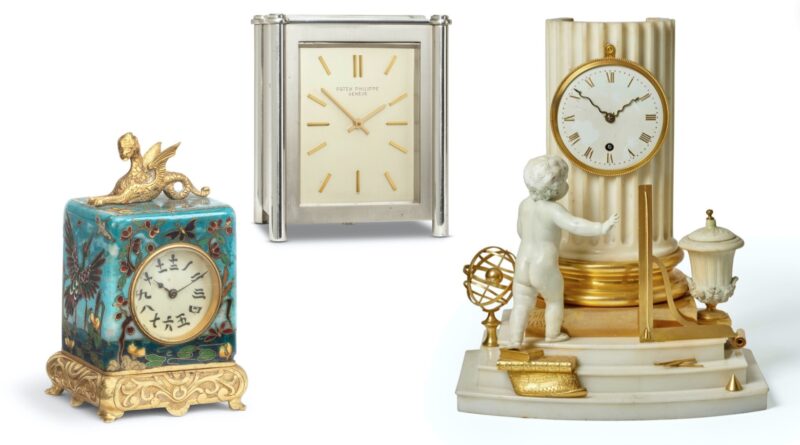Fine clocks sale at Bonhams

A very rare ormolu-mounted white marble and derby biscuit porcelain mantel timepiece by Benjamin Vulliamy features in Bonhams’ Fine Clocks sale on July 3. The clock belongs to an important group of 18th-century sculptural mantel clocks that represent a radical departure from previous English clock design. Dated 1786, the clock carries an estimate of £12,000-18,000.
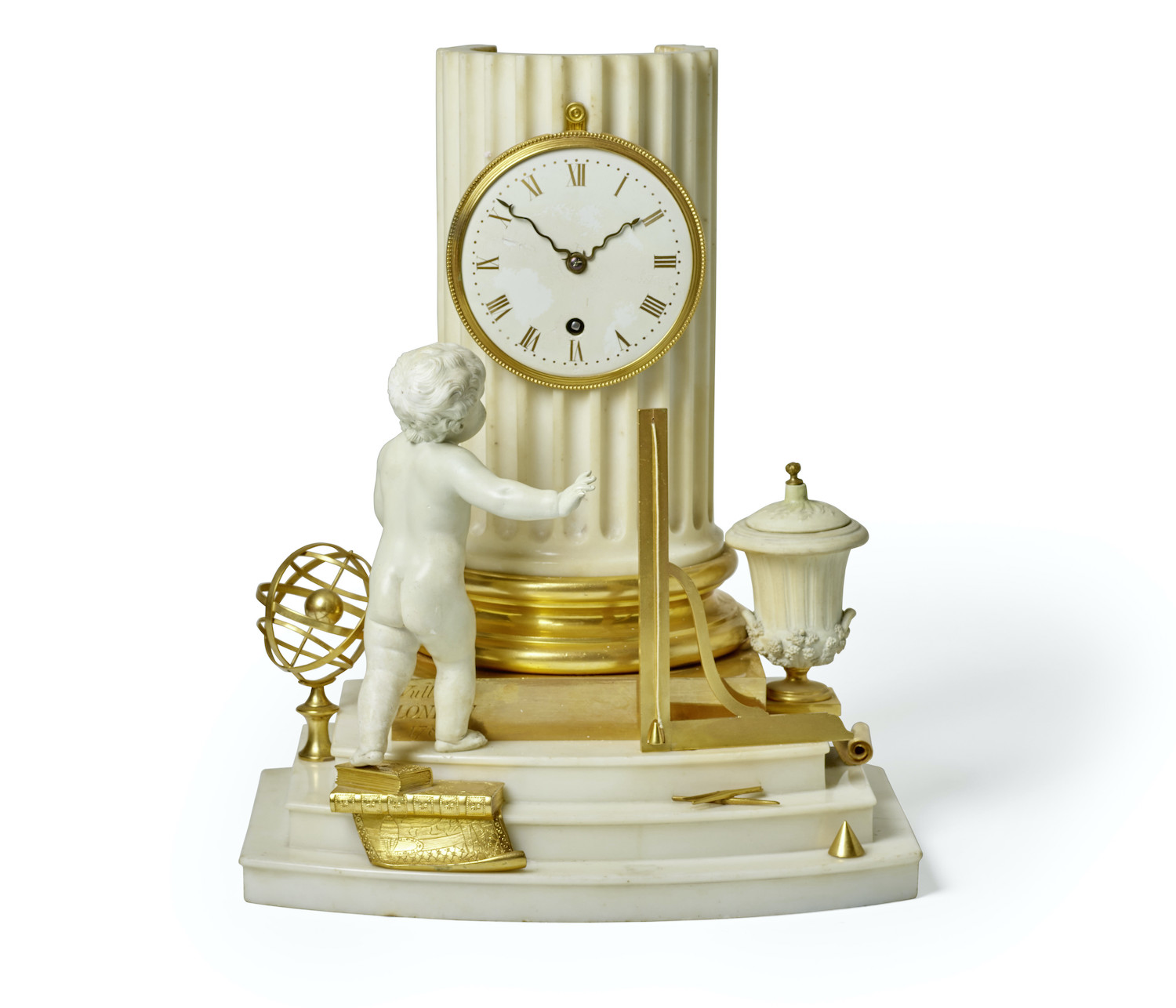
These distinctive clocks, regarded as outstanding examples of British neo-classicism, were first created in the 1780s by Benjamin Vulliamy (1747-1811). At the time, he was only a junior partner in the family firm but had already risen to the heights of being the King’s Clockmaker.
Conscious of the predominance of imported French ornamental clocks in the houses of wealthy and fashionable Britons, Vulliamy set about introducing new designs to rival the French creations. With remarkable foresight, he collaborated with and commissioned ‘12 biscuit boys’ from William Duesbury’s Derby Porcelain Factory in 1786 to adorn a new series of mantel clocks. Vulliamy’s use of white biscuit porcelain together with white marble was an ambitious departure from contemporary French clocks which used mainly bronze and ormolu. The new materials also provided the perfect platform to showcase British ingenuity and excellence.
Vulliamy’s great success was due to his personal talent as a designer and his ability to select and get the best performance from an exceptional network of independent artists, suppliers and craftspeople. He collaborated with sculptors such as John Deare (1759-1798) a Royal Academy gold medallist who sculpted the model figures for William Duesbury’s Derby Porcelain Factory to make into biscuit porcelain. Duesbury was a highly accomplished porcelain artist with knowledge of both the process and the artistic demands of porcelain manufacture. Expertise that was essential to meet Vulliamy’s exacting requirements. These individual artists, brought together by Vulliamy, created what is a tour-de-force of late 18th century English clock design.
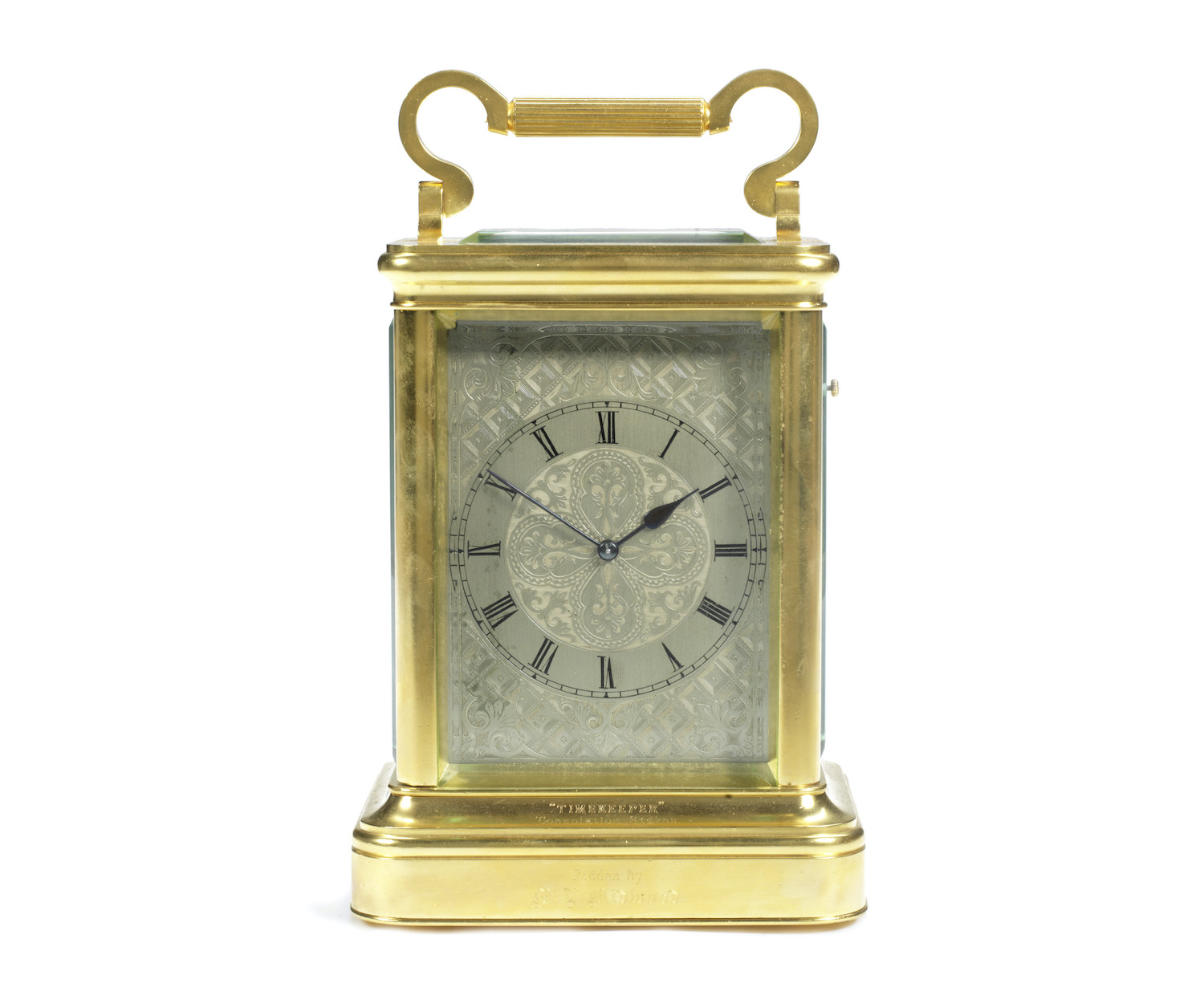
James Stratton, Director of Fine Clocks at Bonhams, commented: “There are very few examples of these exquisitely elaborate and sculptural timepieces. This particular timepiece is thought to be among the earliest designs produced by Vulliamy. These clocks often conveyed an allegorical message through the identity and placing of the figures, which caught the eye of the German traveller, Marie Sophie von La Roche when she visited Vulliamy’s Pall Mall shop in 1786, the date the current clock was made. It’s wonderful to think she may well have admired this very clock on her visit where she noted the ‘Greek figures in biscuit porcelain’. We certainly anticipate much interest not only from the horological world, but also from those with a love of great design.”

Two very rare Patek Philippe solar-powered timepieces will also star in the sale. In 1948, Patek Philippe opened its Electronic Division with the goal of exploring photoelectric and electronic timekeeping. The department produced the groundbreaking solar clock, the first of its kind, which was introduced in 1950. The lots include an extremely rare and very fine Patek Philippe Swiss solar-powered self-winding table clock, (Movement No. 872623). Believed to be only the third such clock to be offered at auction, it has an estimate of £5,000-8,000. A Patek Phillipe Swiss gilt brass solar-powered timepiece in lacquered brass case (No.872890) will also feature and has an estimate of £2,000-3,000.
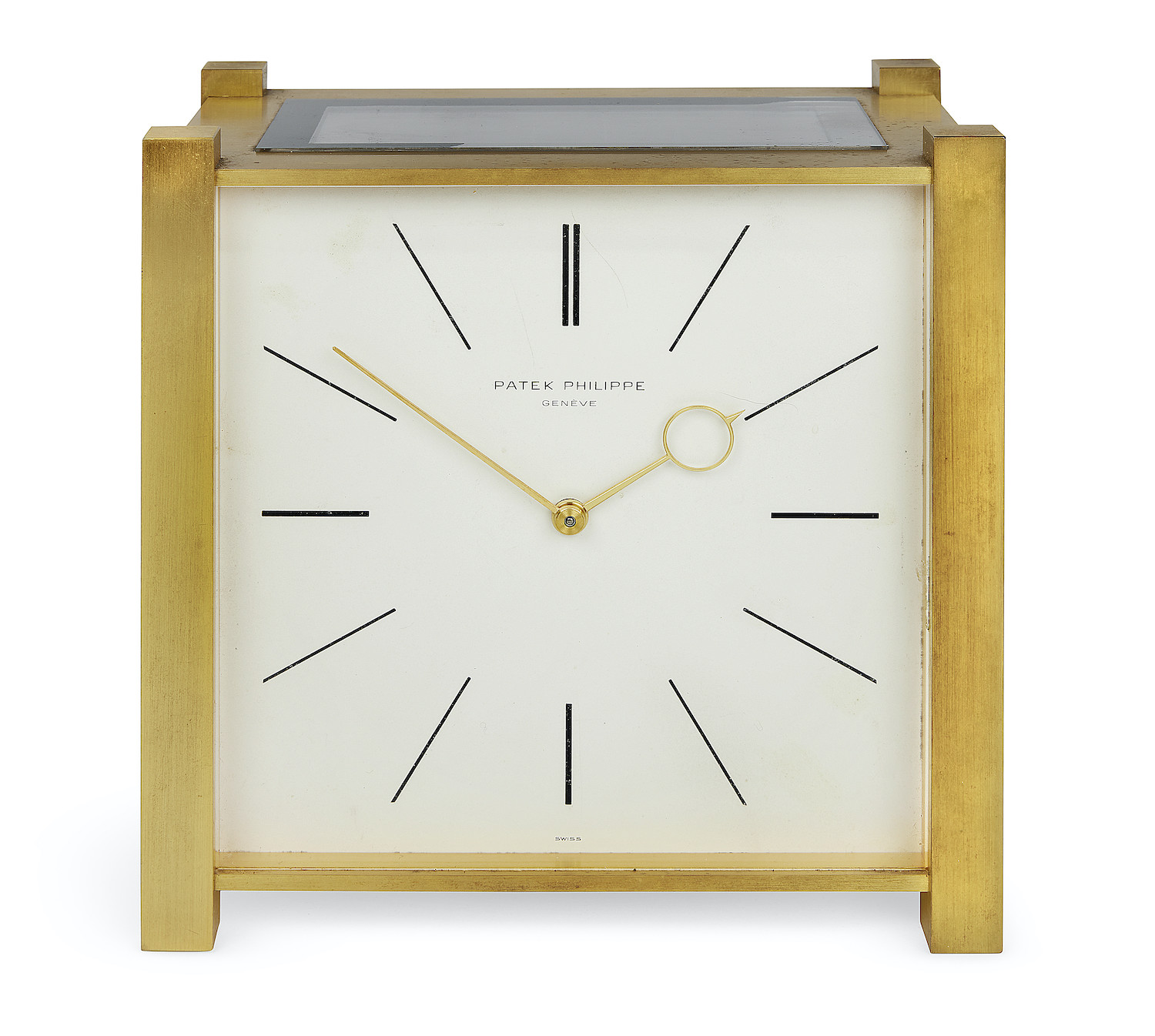
Other highlights in the Fine Clocks sale include:
A late 19th century English gilt brass twin fusee giant carriage clock with Hong Kong horse racing provenance, signed for the retailer G Falconer, Hong Kong. The clock presentation inscription shows the clock was presented for four horse races won by Mr Midwood for Mr Derick-Hunter between the 23 – 25 February 1893. Happy Valley Racecourse was built in 1845 by the British on marshland fields and became a social hub, attracting Hong Kong’s European and Chinese residents. The carriage clock comes together with an associated contemporary gilt tooled leather travel case and two winding keys, 25.5cms (10ins) high. Estimate: £8,000-12,000.
A Fine and Rare English month-going Tripod Timepiece, Thomas Cole, retailed by Mackay Cunningham & Co, circa 1855. Unusual in its modern, forward-thinking design, the case is formed of three plain cylindrical rods on a stepped circular base with thermometer and aneroid barometer in the sunk centre, with Cole’s pendulum locking system, raised on three adjustable hexagonal feet. Cole, a designer and maker, enjoyed considerable esteem in his day for his unique designs and superior craftsmanship. Estimate: £7,000-10,000.
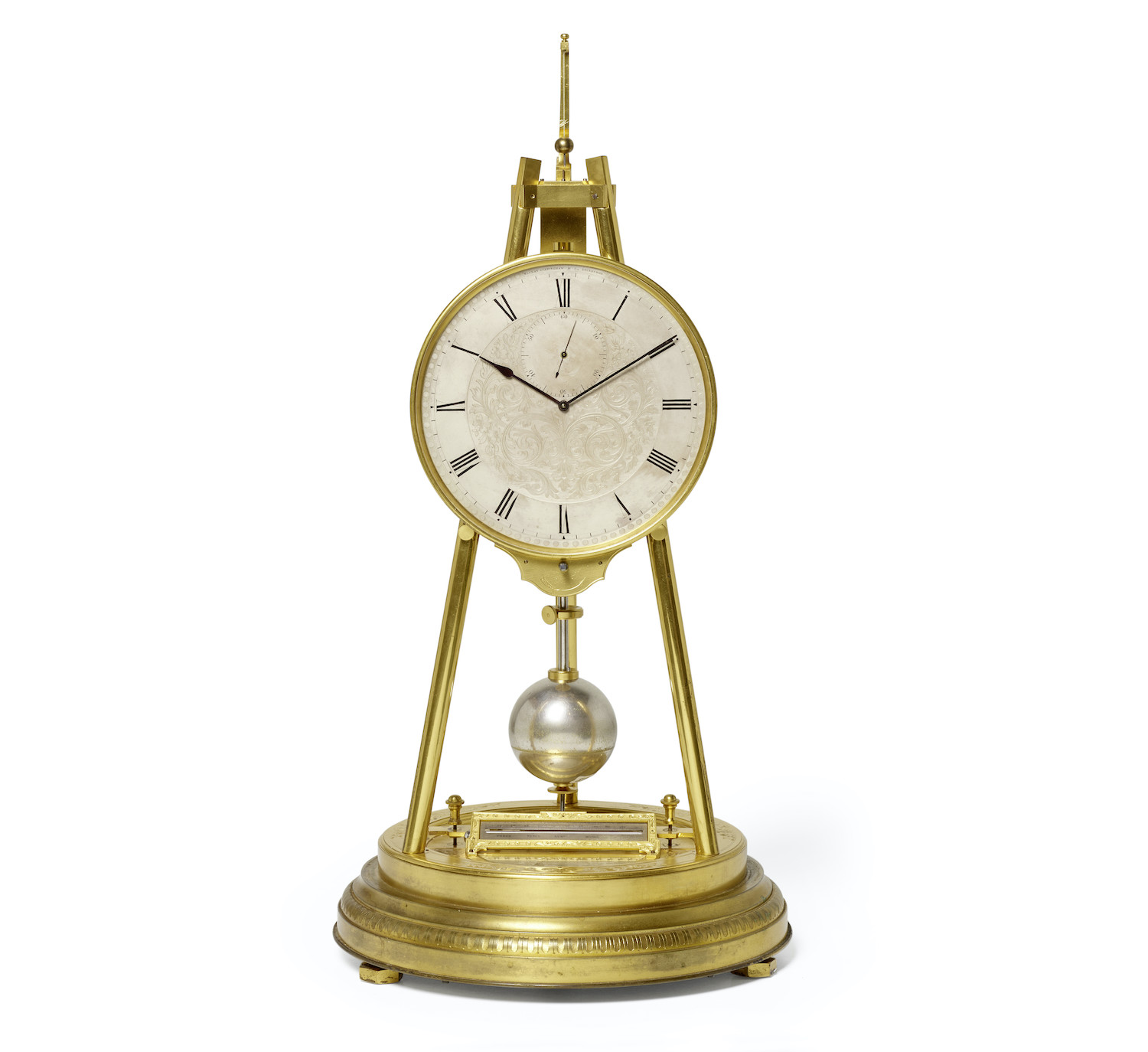
A fine early 19th century mahogany eight-day duration regulator of exceptional quality, Brockbank & Atkins, London. The frontplate numbered 3026. Brockbank & Atkins, a combination of two very accomplished watch and clockmaking families, was one of the most distinguished chronometer makers of the late 18th and early 19th century. Estimate: £7,000-10,000.
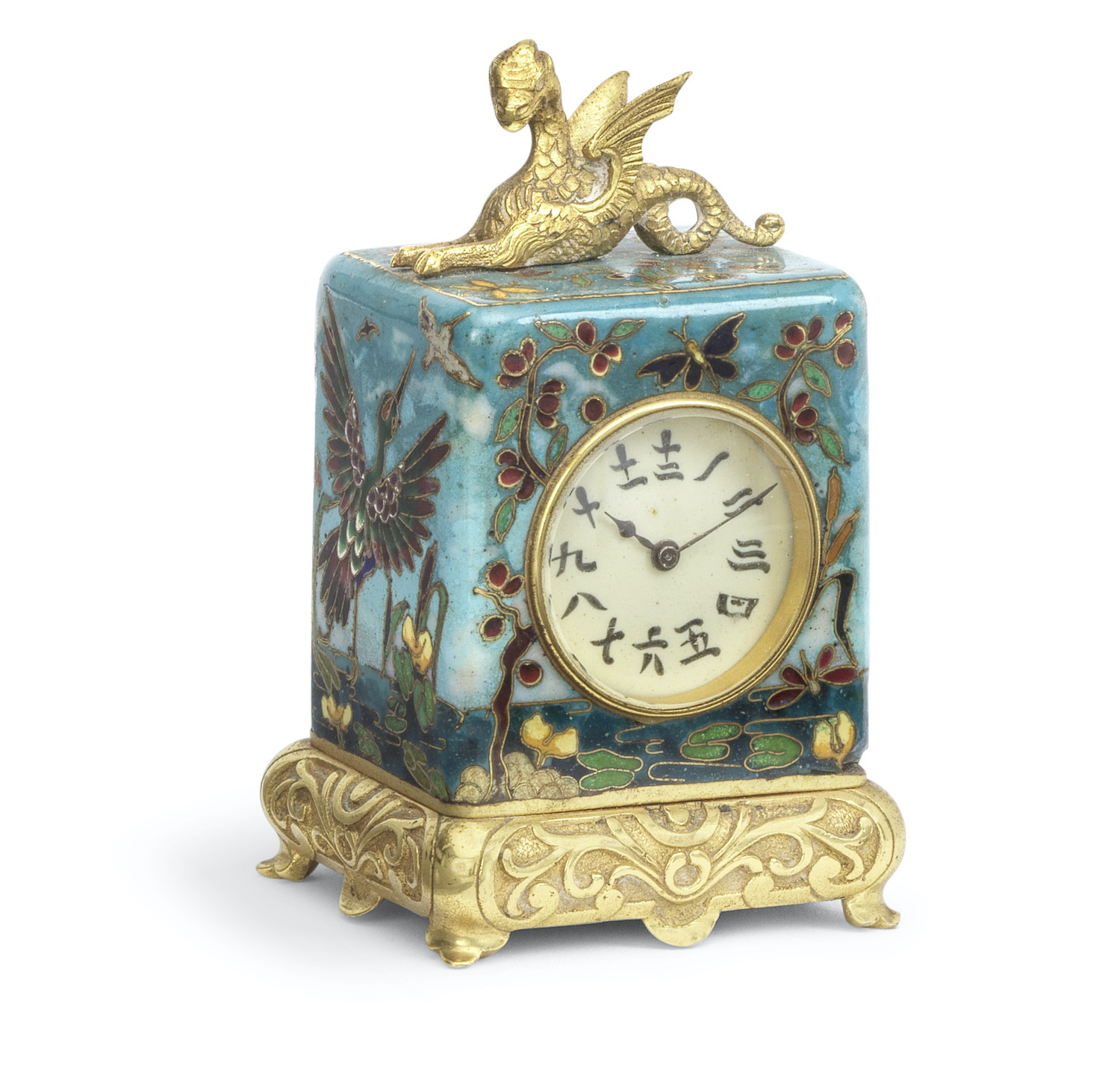
A fine and rare late 19th century French miniature gilt metal, cloisonnéenamel decorated carriage timepiece, Drocourt, number 20737. The case decorated with finely worked scenes in multi-coloured enamels, includes a kingfisher, stork and heron, with lily pads, bull rushes and trailing vines; surmounted by the gilt metal figure of a seated dragon. The 1-inch cream enamel dial with hand-painted numerals. The spring driven movement with bimetallic compensated balance to a lever escapement. Signed and numbered backplate, 8cms (3ins) high. Estimate £800-1,200.
The Fine Clocks sale is part of Bonhams’ London Summer Classics series featuring a selection of highly sought-after pieces from Old Master Paintings, European British Ceramics to Fine Glass, Decorative Arts, and Fine Clocks, as well as Antiquities, taking place over both the Knightsbridge and New Bond Street salerooms, running between now and July 5.

